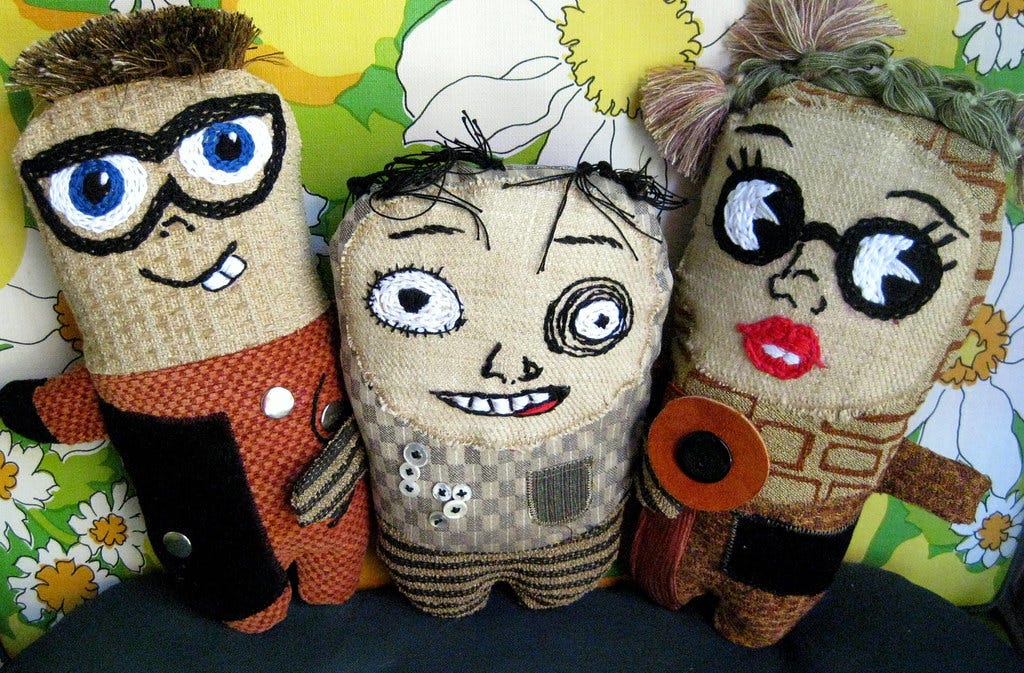Teaching Kids About Sustainability Through Textile Upcycling
Sustainability is no longer just a buzzword; it's a necessity. With environmental issues like climate change, deforestation and pollution affecting the planet, teaching the next generation about sustainability has become a pressing responsibility. Schools play a pivotal role in shaping young minds, and weaving sustainability into education fosters an early understanding of environmental responsibility.
Upcycling, especially textiles like fabric and leather, is one of the most engaging and impactful ways to teach kids about sustainability. Textile waste poses a significant environmental challenge. Every year, millions of tons of fabric and leather scraps end up in landfills, contributing to greenhouse gas emissions and water pollution. However, these materials also hold enormous creative potential. Through upcycling, we can transform these so-called "waste" materials into functional or artistic items, reducing landfill contributions and promoting innovative thinking. For educators, teaching kids to reuse and upcycle textiles not only benefits the environment but also encourages creativity, resourcefulness, and problem-solving skills, which are key competencies in today's world
.
Upcycling: A Powerful Tool for Teaching Sustainability
Upcycling is a fun and creative way to teach kids about sustainability. It's the process of taking something old and unwanted and turning it into something new and useful. This differs from recycling, which involves breaking down materials and making them into something else. Upcycling retains the original material's integrity, transforming it into a new product with minimal processing. Here are some examples of upcycling:
Turning an old t-shirt into a reusable shopping bag
Using fabric remnants to make a colourful pencil case
Creating a patchwork quilt from fabric scraps
Making bookmarks from leather offcuts
Upcycling is a great way to teach kids about sustainability because it helps them understand the importance of reducing waste and reusing materials. It also allows them to be creative and have fun while learning.
Why Focus on Textiles?
Textiles are one of the most visible and impactful categories of waste. From old clothes and bedding thrown away by households to reusable industrial discards, the volume of waste is staggering. According to the United Nations Environment Programme (UNEP), the fashion industry alone generates 92 million tons of textile waste annually. This waste contributes to pollution in two ways:
Landfill Overload: Textile waste decomposes slowly, releasing harmful gases such as methane.
Water Pollution: Dyes and chemicals from disposed textiles leach into water systems.
However, textiles also provide a perfect medium for educational art and craft projects. Whether it's a piece of fabric leftover from a sewing project or leather offcuts from furniture manufacturing, these materials are versatile, durable, and available in abundance.
Benefits of Teaching Sustainability Through Upcycling
There are many benefits to teaching sustainability through upcycling, including:
Fostering environmental awareness
Encouraging creative thinking and problem-solving
Promoting cost-effective learning
Building lifelong habits
When students engage in upcycling projects, they learn about the environmental impact of waste and the importance of resource conservation. They also develop creative thinking and problem-solving skills as they find new uses for old materials.
How to Teach Sustainability Through Upcycling
There are many ways to teach sustainability through upcycling. Here are a few ideas:
Start by introducing students to the concept of sustainability and the importance of reducing waste.
Show students examples of upcycled projects to inspire them.
Provide students with opportunities to upcycle textiles themselves.
Help students reflect on the environmental impact of their projects.
Upcycling Projects for Kids
There are many different upcycling projects that kids can do. Here are a few ideas to get you started:
Upcycled Mufty day
Textile art comps
Fabric collages
No-sew library bags
Patchwork for the homeless project
Leather bookmarks
Leather keychains

These are just a few ideas to get you started. With a little creativity, you can come up with many other upcycling projects that will help your students learn about sustainability and have fun at the same time.
Teaching kids about sustainability through upcycling textiles is a great way to positively impact the environment. It's also a fun and rewarding experience for both teachers and students. But there are a few issues to look out for:
Avoid Overloading Students
The immensity of environmental challenges can sometimes leave students feeling powerless or overwhelmed. To counteract this, complex issues can be broken into actionable steps students can take to make a difference.
Balance Challenges with Success Stories
Focusing exclusively on risks can lead to fear in students. Instead, include success stories that highlight progress in tackling environmental challenges. For example, highlight climate advocates students can relate to like Greta Thunberg.

Emphasise Realistic Goals
Avoid a rigid, moralistic approach and instead encourage discussions about what individuals can do that is realistic and practical. This way students can more easily consider what changes they can make in their daily activities that align with sustainability.
So what are you waiting for? Get started today!
Trashy is at Shop 4, 92-112 Henry Street, Penrith, NSW
Click here for opening hours





